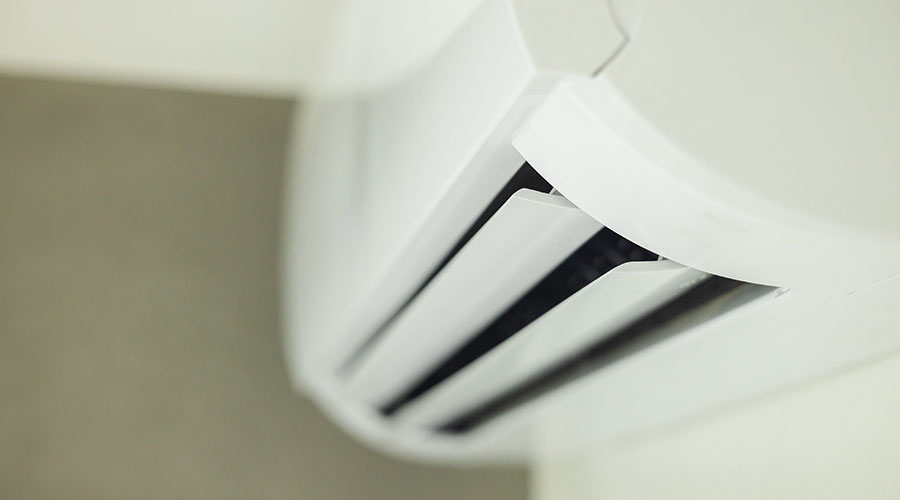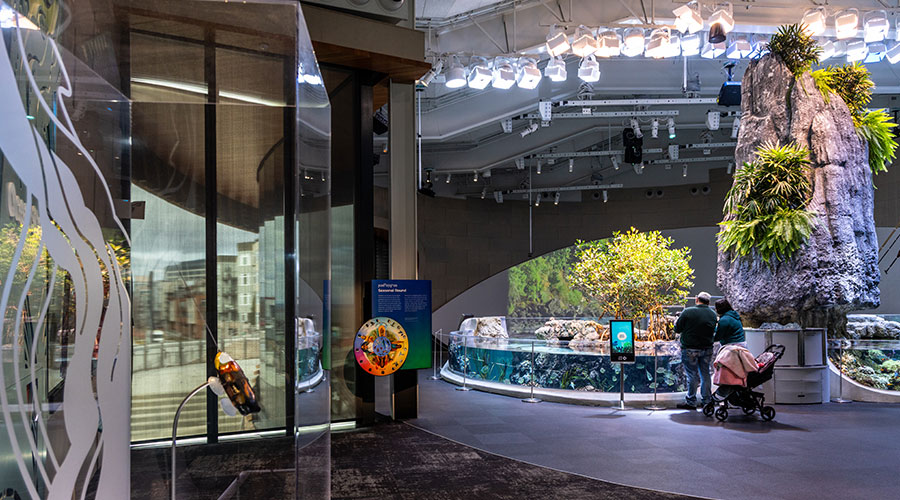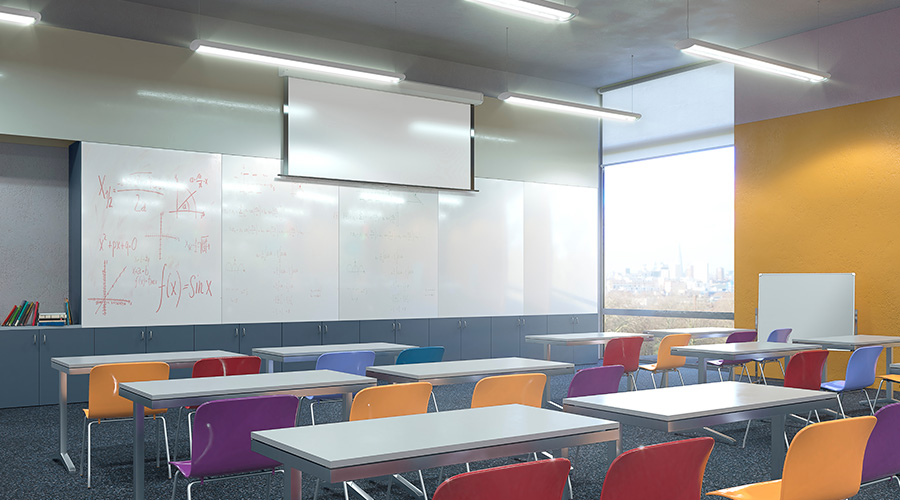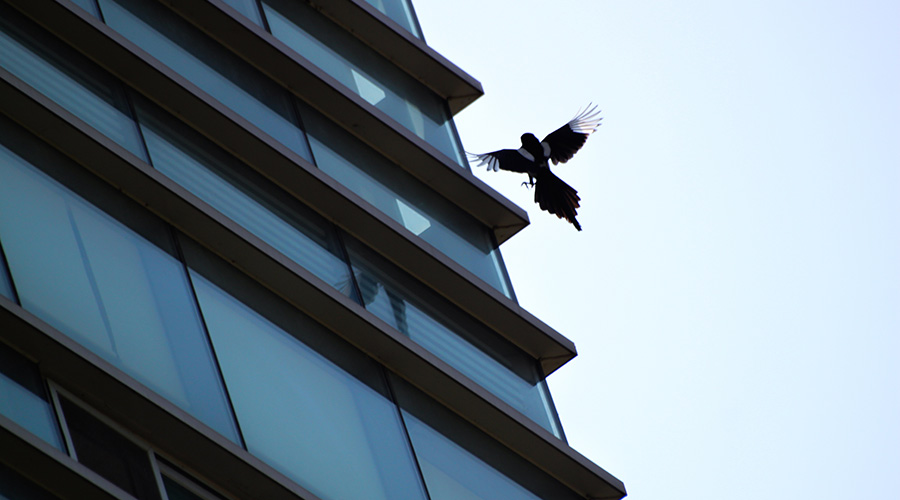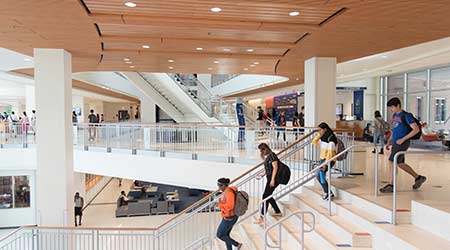 Strong leadership and clear communication were key elements in ensuring that upgrades at the University of Florida student union created minimal disruptions to the facility’s activities and operations.
Strong leadership and clear communication were key elements in ensuring that upgrades at the University of Florida student union created minimal disruptions to the facility’s activities and operations.Effective Project Management Helps University Reduce Energy Usage
Major lighting and HVAC upgrades help University of Florida’s student union meet user needs and cut energy costs
The result of the retrocommissioning and master plan processes at University of Florida’s J. Wayne Reitz Union was an expansion that added a wing to the building and renovations of 80,000 square feet of the existing structure. The project, which started in 2014 and finished in 2016, included a number of energy-saving measures, one of which was replacing all incandescent and fluorescent lighting with LED fixtures.
Mironack and his team opted to undertake all of the projects simultaneously over two years instead of stretching out the work over a longer period.
“We did it all at the same time, which was a positive and a negative,” he says. “The positive was that we got it all done and out of the way. The negative was that the level of chaos was even greater.
“It was changing out air handlers and chillers and pipe and ductwork and VFDs while at the same time we were moving a ballroom up to another floor and adding structural stability members to the facility.”
Renovations and upgrades inevitably disrupt operations the operations of any facility to some extent, so Mironack opted to minimize the length of the disruptions while keeping their scope to a manageable level.
“From our customers’ perspective, they don’t know the extent, so if they’re disrupted in this area and then they’re disrupted in that area, too, it’s all one project,” he says. “They really didn’t have a perception of what the different components were. So while we affected more areas at the same time, the overall duration of work was condensed instead of stretching it out over years and years.”
Spotlight on lighting
Among the high-priority projects included in the renovation and expansion of the University of Florida’s student union was a lighting system upgrade.
“Some fixtures dated back to the ‘60s, and we still were able to get bulbs,” Mironack says. “We had every kind of incandescent, halogen, CFL and fluorescent (bulbs) in all shapes and sizes. We literally had a storage room with nothing but light bulbs.”
“We had various types of fluorescents — T12s, T8s — and we were changing out bulbs constantly. We had upgraded some of our cans to CFLs, but it was a big mish-mosh. We knew very clearly that those things were consuming so much energy. In many areas, they were on 24/7, and that also was adding to our energy consumption.”
The upgrade to LEDs was a major element in the project and an important energy-conservation measure.
“Changing out the fixtures and adding both light sensors and motion sensors in key areas allowed us to automatically turn off lights when they weren’t needed,” Mironack says. “We also standardized our lighting inventory. We went from hundreds of different types of bulbs in inventory.
“We simplified to a downlight can. We now have a lot of two-by-two and two-by-four fixtures in offices and some of our walkway areas. It gives us a consistent lighting level and consistent look, and the maintenance, of course, is next to nothing. Now it’s been a few years, and there are constantly changes in light fixtures, and we’re able to get very close to what we have elsewhere.”
While most of the lighting upgrades went smoothly, technicians did encounter an unexpected challenge.
“We did encounter a problem with the fixtures in one of our ballrooms,” he says. “We originally had dimmable fluorescent fixtures connected to a programmable lighting control package, but we learned that we were not going to be able to do a simple swap-out of fixtures. Creative wiring by the electrician gave us a short-term fix. He had to rewire each circuit off the controller and install a resistor in the form of a 25-watt light bulb on each. We were able to get custom control boards so the system would function long-term.”
Complicating the work in the ballroom was the added pressure of a tight schedule. “We had set approximately a four-week window to go in and replace the lights and put in new sensors for our building automation,” he says. “It took so long because the ballroom has a 26-foot-high ceiling. We had to have multiple lifts in the room, given the fixtures we had to replace. We also had to get the wiring and the lighting controls in place.”
Related Topics:






